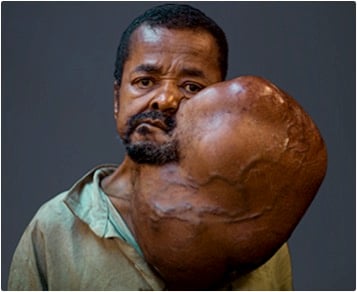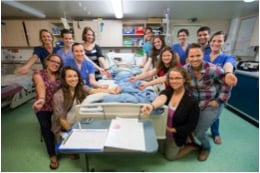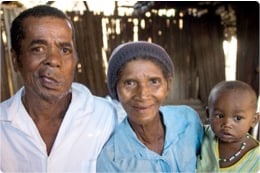
A rare respiratory disease may be more prevalent in Quebec
27 November 2025
Rise in respiratory infections and measles outbreak: important infection prevention measures at the Montreal Children’s Hospital.
Read moreWelcome to the Montreal Children's Hospital

11 January 2017
Repair of an inguinal hernia is a bread and butter procedure for a pediatric surgeon, one of the most common procedures we perform. With the exception of small premature babies, the surgery is usually very straight forward in high resource countries. At the Montreal Children’s Hospital, we may perform 6 or 7 such cases in a single elective operating room day.
This is not the case in Benin and in most of sub-Saharan Africa. A hernia is often a challenging case. Due to years of neglect and lack of intervention, these hernias can enlarge to grape fruit size masses and become chronically incarcerated, or stuck in the scrotum. Patients still die of complications of untreated hernias. Recurrence rates are higher. My operative experience on the Africa Mercy this time starts with such a case: an inguinal hernia in a 10-year old boy that has been present since age 3 or possibly younger. It is a humbling experience, even for a pediatric surgeon who has performed many hundreds of these cases over the years.
Sambany is a poster child for neglect and lack of surgical services. He is a man in his early 60’s who underwent a resection of a 16-pound neck tumor by Mercy Ships surgeons during the Madagascar mission. More than a dozen Africa Mercy crew members donated their own blood, so he could survive his operation. His tumor had been growing for decades. It had impoverished him and left him desperate. It was a ticking time bomb that would eventually suffocate him. The story of his surgery made international headlines and was featured in a New York Times editorial.

When I saw Sambany’s picture, I was haunted by one recurring thought. How could this happen? How is this possible? It happens and is possible because, for too long, surgery has been considered a luxury medical intervention, not a public health issue. Global medical programs have focused almost exclusively on infectious disease, which are important. But HIV, tuberculosis, and malaria combined account for one tenth of the global disease burden, while one third of that burden may be amenable to surgery. At any one time, 80 million people around the world face financial catastrophe if they require surgery, and 5 billion people lack access to safe, affordable, and timely surgical and anesthesia care.
The Lancet Commission, the World Bank, and the World Health Organization have recently brought this dire need for investment in surgical care to the forefront of the international development agenda. To their credit, Mercy Ships has recognized this need for three decades, and has been addressing the need, one neglected patient at a time. The Africa Mercy patients are not aware of the Lancet Commission or the World Bank reports. But they know that years of neglect are about to end when they take their first step on the Ship’s gangway.

Photo captions:
Photo 1: Sambany before surgery (source: Africa Mercy).
Photo 2: Members of the Africa Mercy crew who donated blood to Sambany (source: Africa Mercy).
Photo 3: Sambany with family after surgery (source: Africa Mercy).

Dr. Sherif Emil is a pediatric surgeon and Director of the Division of Pediatric General and Thoracic Surgery at the Montreal Children’s Hospital. Over the next 2 weeks, he will be part of the volunteer crew of the Africa Mercy, currently docked in Cotonou, Benin. The Africa Mercy is the world’s largest civilian hospital ship dedicated to bringing hope and healing to tens of thousands of the world’s impoverished populations.
Read more:
Dispatches from Benin #1: Coming Home to A New Country
Dispatches from Benin #2: The Price of Neglect
Dispatches from Benin #3: Teamwork
Dispatches from Benin #4: Make Good Decisions